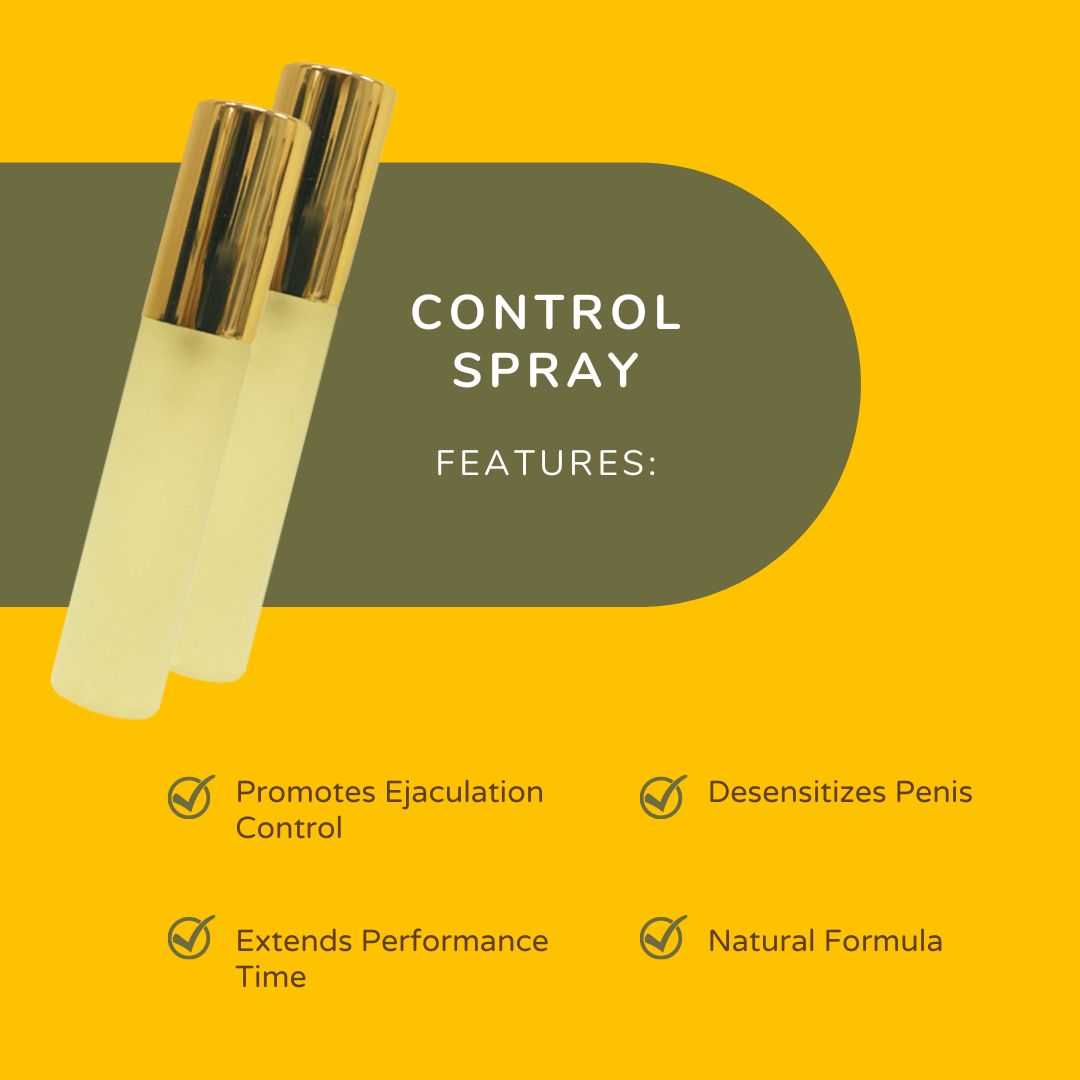CATEGORY: DELAY EJACULATION
The Squeeze Technique: An Effective Approach for Managing Premature Ejaculation

Premature ejaculation (PE) is a common sexual concern affecting men of all ages, often causing distress and impacting relationships. While there are various methods and treatments available, the squeeze technique has gained attention as a simple yet effective approach to managing premature ejaculation. In this article, we'll explore what the squeeze technique entails, how it works, and its potential benefits for individuals experiencing premature ejaculation.
Understanding Premature Ejaculation
Premature ejaculation is defined as the persistent or recurrent ejaculation that occurs with minimal sexual stimulation, either before, during, or shortly after penetration, and before the person wishes it. It's a prevalent condition that can lead to feelings of frustration, embarrassment, and dissatisfaction in both partners.
The Squeeze Technique
The squeeze technique is a behavioral therapy developed to address premature ejaculation by allowing individuals to gain better control over their arousal and ejaculation response. The method involves specific steps that are performed during sexual activity to delay ejaculation.
Here's a step-by-step guide to the squeeze technique:
1. Timing is Key:
Begin sexual activity as usual, including foreplay and arousal.
Pay close attention to your level of arousal and the impending sensation of ejaculation.
2. Identify the Point of No Return:
Focus on recognizing the "point of no return," which is the moment when ejaculation becomes inevitable.
3. Communication with Your Partner:
Communicate with your partner about the intention to use the squeeze technique and the importance of their cooperation.
4. Squeeze the Penis:
When you feel you are approaching the point of no return, either you or your partner gently squeezes the base of the penis for about 30 seconds. This pressure helps to reduce arousal and delay ejaculation.
5. Pause and Relax:
After the squeeze, pause sexual activity for about 30 seconds to allow the arousal to decrease. Use this time to engage in other forms of pleasurable activities or simply relax.
6. Resume Sexual Activity:
Once the arousal has subsided, resume sexual activity.
Repeat the squeeze technique as needed, alternating with pauses, until you feel confident in your ability to control ejaculation.
Benefits of the Squeeze Technique
1. Non-Invasive:
The squeeze technique is a non-invasive method that doesn't require medications or medical procedures, making it a natural and accessible option for many individuals.
2. Involves Partner Participation:
The involvement of a partner in the squeeze technique can enhance communication and intimacy between partners, fostering a supportive and collaborative approach to managing premature ejaculation.
3. Improved Ejaculatory Control:
With practice, the squeeze technique can lead to increased ejaculatory control, allowing individuals to enjoy longer-lasting sexual experiences.
4. Cost-Effective
Unlike some medical treatments, the squeeze technique is a cost-effective approach that doesn't involve ongoing expenses.
Alternative Approaches for Premature Ejaculation (PE)
The squeeze technique is not the sole method for addressing premature ejaculation, as there are various alternative treatments supported by more extensive scientific research.
Here are some alternatives to consider.
1. Topical PE Treatments
Instead of employing the squeeze technique, you can opt for topical treatments that involve spraying, wiping, or rubbing a solution on the penis. Examples of numbing agents in these treatments include Benzocaine (such as our Clockstopper benzocaine wipes), Prilocaine, and Lidocaine. These substances desensitize the penis, extending the duration of sexual activity. These treatments, available in spray, wipe, or cream form, can be purchased over the counter or online. However, they may have drawbacks, such as potential messiness, irritation, or numbness in the penis. It is advisable to use a condom to prevent numbness in your partner's vagina, and these treatments may need to be applied before every sexual encounter.
2. Medications for PE
Several medications are available for treating premature ejaculation. Selective serotonin reuptake inhibitors (SSRIs), such as Escitalopram (Lexapro®), Sertraline (Zoloft®), Paroxetine (Paxil®), Fluoxetine (Prozac®), and Fluvoxamine (Luvox®), are commonly prescribed off-label for PE, even though they are not FDA-approved for this purpose. SSRIs are known to be effective, increasing intravaginal ejaculation latency time (IELT) between two- to eightfold. Another class of medication, phosphodiesterase type 5 inhibitors (PDE5 inhibitors) like Sildenafil (Viagra®), Vardenafil (Levitra®), and Tadalafil (Cialis®), primarily used for erectile dysfunction, may also be considered for PE treatment. While more research is needed on their efficacy, they may be suitable for individuals who cannot tolerate SSRIs for medical reasons. It's important to note that medications may come with side effects, such as fatigue, nausea, or sweating.
3. More Tips for Preventing PE
Additional non-prescription, non-product-related strategies for preventing premature ejaculation include:
Therapy: Address psychological causes of PE through couples therapy, cognitive behavioral therapy (CBT), or sex therapy. Combining therapy with medication may enhance treatment effectiveness.
Use of Condoms: Condoms can reduce penile sensitivity during sex, providing more time before ejaculation. Special PE condoms containing a topical anesthetic are also available.
Masturbation Before Sex: Masturbating before sexual activity may delay ejaculation during subsequent encounters, but be mindful of the refractory period.
Distraction: Redirecting thoughts during sex can help prevent PE, but excessive distraction may lead to loss of erection.
Communication: Inform your partner before trying techniques like the squeeze method or stop-start approach. Open communication about PE can alleviate performance pressure and allow for collaborative problem-solving.
Pelvic Floor Exercises: Strengthening pelvic floor muscles through exercises like Kegels may improve ejaculation control.
Regular Exercise: Research suggests that regular exercise reduces the frequency of PE compared to sedentary lifestyles.
Conclusion
The squeeze technique offers a practical and partner-inclusive strategy for managing premature ejaculation. While it may not be a one-size-fits-all solution, it has shown promise for many individuals seeking a natural and non-invasive method to gain better control over their ejaculation. As with any approach to sexual health, it's essential to consult with a healthcare professional to ensure that the chosen method is appropriate and safe for individual circumstances.


